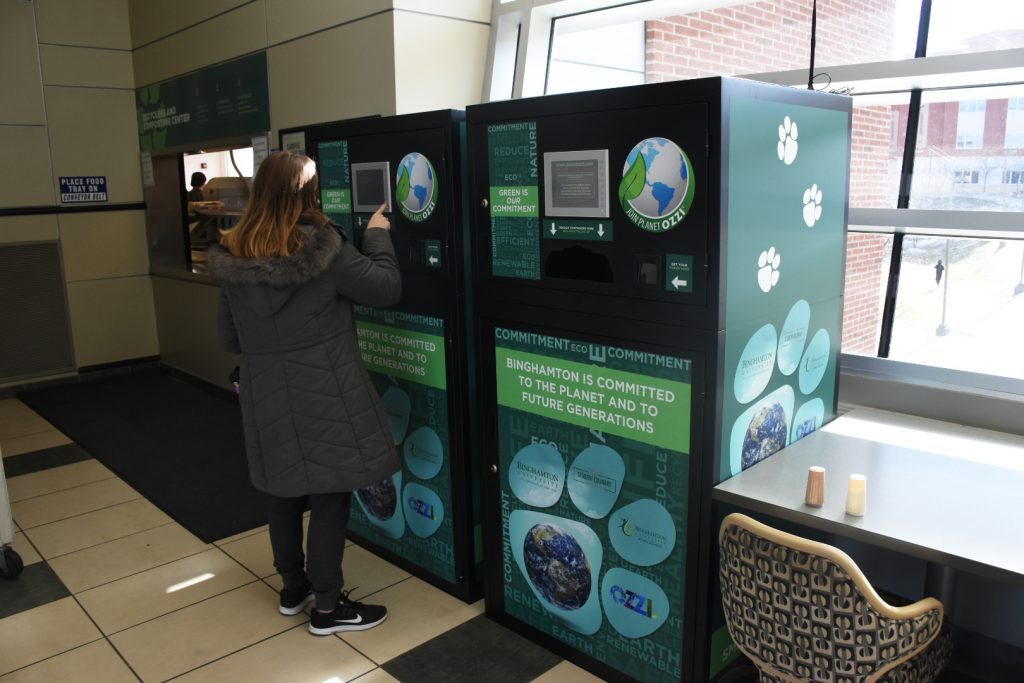A new food container system focused on sustainability has been in full effect in Binghamton University’s dining halls since the start of the semester, but some students are confused and disappointed.
The system consists of an OZZI machine and reusable plastic containers. Students use their meal plans to receive one free to-go container from a cashier in the dining hall. Once used, students deposit their dirty containers into the OZZI machines and receive a non-monetary token in return.
But as students begin try out the OZZI system, some are raising concerns over how it works. Nicole Kissos, a sophomore majoring in business administration, said she recognizes the benefits of the system but misunderstood how many to-go boxes students could get.
“I think the concept is good, but the fact that I can only get one container is a little annoying,” Kissos said. “I was under the impression you would get two, and one you could keep in your dorm and wash on your own and bring it when it’s convenient and the second one you could keep returning it and keep one token — I don’t know, that’s what I thought it would be. Now it’s kind of annoying to bring my stuff and forget it. It’s not that bad — I appreciate the system, but I think sometimes it’s a little inconvenient.”
The implementation of the OZZI system is the actualization of a long effort from the Student Culinary Council (SCC) and Binghamton University Dining Services (BUDS) to improve sustainability on campus. Talks of transitioning to the OZZI system have been ongoing for the past four years; however, it was the backlash surrounding a switch from compostable to-go containers to plastic ones in April 2019 that gave the SCC and BUDS the push to change, according to the SCC.
Some students have also experienced technical difficulties with the OZZI machines. Kaylee Oelofse, a freshman majoring in biology, had an issue when the barcode sticker on her to-go box fell off. Without a barcode, the machine will not receive a container or provide a new token.
“I had an instance where I brought one back, but I didn’t have the sticker on it so I couldn’t scan it in, so I had to bring it back [to a cashier],” Oelofse said. “I don’t know why the barcode is a sticker; I don’t know why it wouldn’t just be part of the container.”
Jared Eipp, a freshman double-majoring in computer science and mathematics, also had a problem trying to return his container, but said it was quickly resolved.
“I put it in and pushed ‘Coin’ and it didn’t give me a coin once,” Eipp said. “But I asked a [cashier] and he gave me a coin, so it wasn’t any issue.”
Despite the criticism, Eipp said the OZZI system is something that just needs a little getting used to.
“I don’t really see too much of an issue with it,” Eipp said. “I totally understand the point of trying to reduce the waste, so I support that. I don’t know if there is a great explanation, like a way to learn, other than doing it once. Once you do it twice it’s not that bad — figuring it out is not terrible.”



